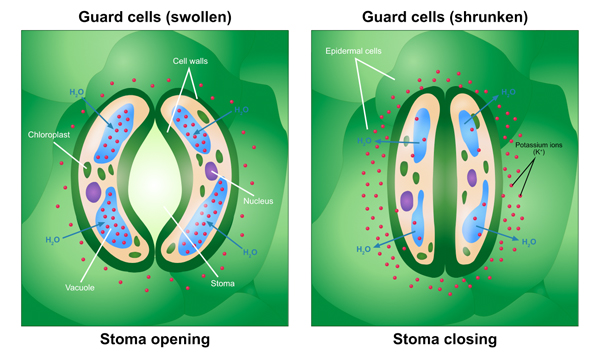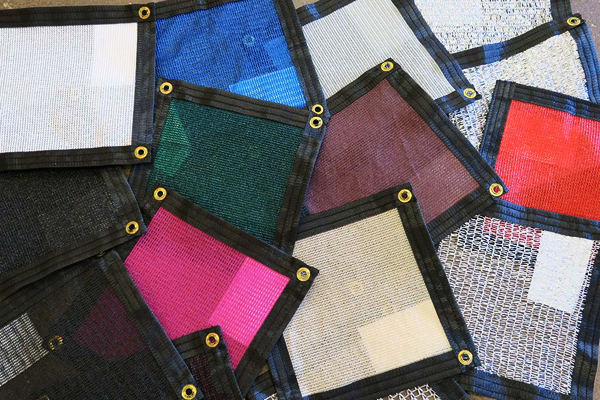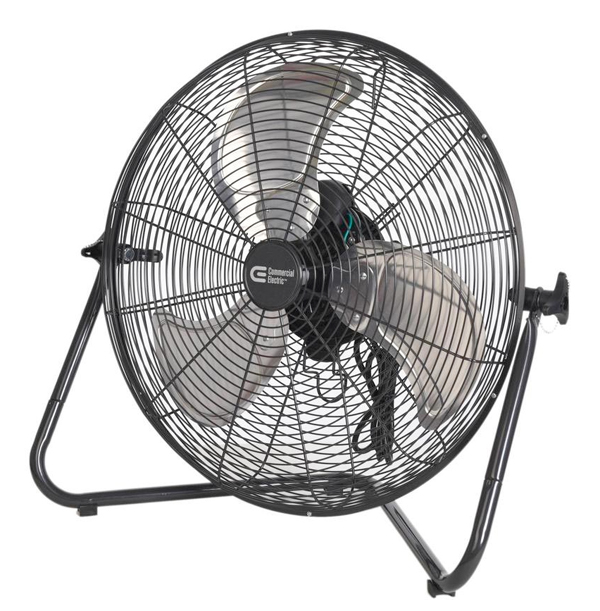.jpg)
Chapter 29
Hot Weather Tomato Protection
Solar radiation intensity refers to the amount of sunlight beaming down on us. Though weather stations all record air temperatures, few measure light intensity. The quantity of light our plants receive is affected by length of daylight, solar angle, atmospheric cover (clouds) and, for gardeners, any materials used to shelter their plants. Sunlight contains a spectrum of wave lengths with the shorter ones participating in photosynthesis while the longer ones tend to create heat. Sunlight has a positive correlation with tomato plant production, but only to a point.
During the summer months, June, July and August in North America, the solar angle, the angle at which the sun's rays hit the earth, is such that the sun shines more directly on us than at any other time of the year. As a result, fewer of the sun's rays are reflected away and our plants receive more solar energy than during the rest of the year. Some of this solar energy is used by plants in photosynthesis and some produce heat. Plants need both. Photosynthesis is the process by which plants turn solar energy into sugars which are stored and later used by the plant for growth and fruit production. Some of the solar energy, the longer wavelengths (infrared) create heat. The plants need heat, but too much heat causes photosynthesis to stop and this can negatively impact both plant and fruit growth. So, how much light does a tomato plant need?

There is a known minimal amount of light plants require for growth. Growers using greenhouses during the winter months are well aware of this and use supplemental lighting to reach the necessary levels for plant growth and tomato production. It has also been shown that there is an upper limit beyond which tomato plants will no longer benefit from light. Light beyond that level gives no benefit to plants. The necessary level is around 50% of full sunlight during July and August. During summer months, if the sunlight raises the air temperature above 85 degrees, there will begin to be an adverse heat effect on the tomatoes. Tomato plants begin to close the stomata on the underside of their leaves in order to conserve water. This starts to essentially turn off photosynthesis as carbon dioxide can no longer enter the leaves. At 95 degrees all of the stomata are closed and the plant goes into a rest mode, no matter how much light is available, until the temperature drops to more acceptable levels. When air temperature rises above 95 degrees for more than a day or two, tomato plants stop growing and setting fruit. If air temperatures are above 85 degrees you can assume your plants are receiving more than enough light energy for photosynthesis.
Like any plant, the tomato does benefit from sunlight, but to a limit. In the midst of summer tomatoes do not need 12 hours of full sun. Six 6 hours of full sun should be enough, or 12 hours of partial sun or indirect sunlight. Recall that a tomato plant can get quite a bit of light indirectly for its photosynthesis needs. The light intensity on a day with overcast skies is nearly equal to what plants get under fluorescent light in a greenhouse during the winter. Subsequently, the problem for giant tomato growers is how to get the maximum light required for photosynthesis while not allowing the plant to get too warm. Tomato plants prefer the air temperature to be between 70 and 85 degrees. These temperatures result in maximum growth prior to maturation.
Excessive heat causes the tomato to mature and ripen but not to increase in size. The leaf stoma close at 95 degrees so that no moisture can leave the plant, but this also shuts down photosynthesis as no carbon dioxide can enter. The plant is not making and storing sugar for future growth. The tomatoes slow in their growth and then stop. Excessive heat results in earlier smaller tomatoes, smaller than they could have been if allowed to grow for a longer period of time. Giant tomato growers are going for size, not the earliest tomato on the block.
To reiterate, the problem for giant tomato growers is that the light energy used in photosynthesis is accompanied by light energy that is converted to heat. Too much light is not harmful but too much heat is. Heat and light must be balanced. In the event of high temperatures it is best to protect tomato plants from sun and heat. The best course of action is to keep direct sunlight off foliage. The use of shade cloth can lower plant and soil temperatures by as much as 10 to 12 degrees. A leaf horizontal to the sun's rays is 14 degrees warmer than the air temperature.

Using stakes, fiberglass or poly hoops build a framework over your plants and drape shade cloth over the framework much as you would drape a tablecloth over a table. Avoid completely covering plants; allow a space of 2 or 3 feet below the shade cloth for air to enter and move easily around the plants. There are many examples of shade set-ups available on the Internet which are not difficult to find using Google. (Google "shade cloth setups.") Shade cloth comes in many different weights, colors, and percentage of sun blocked/shade provided. Some shade cloth is knitted and some woven. The percentage of the shade cloth is the percentage of sun blocked. 20%, 40 %, 60% and 80% shade cloth can be purchased in various sizes. The darker the color or the tighter the weave, the more the sun is blocked. The metallic colors reflect; the other colors do not. What percentage you will need depends on how high the temperature rises in your garden. The higher the percentage of blocked sun the greater the temperature reduction. If your garden temperature goes to 110 degrees you will need more shade than if you are expecting a high temperature of 95 degrees. Basically you are just hanging a piece of fabric to block the sun. You are not building a permanent structure. Measure the area you want shaded, buy a piece of shade cloth large enough to cover and hang it up between the plants and the sun. 30% shade cloth gives you approximately 5 degrees of cooling, 60% averages 10-12 degrees.

The color is your choice, the shape is your choice, the percent blockage is your choice and the way you hang it is your choice. When during the season you use it, is also your choice. You do not want to shade your plant more than necessary as you may be blocking light needed for photosynthesis. There needs to be a balance. In my garden, shade cloth is most likely to be needed in late July and early August, but not during the rest of the season.
If you attach dark-colored shade cloth to the plant protection framework; do not allow the dark shade cloth, which more readily absorbs heat, to sit directly on the plant foliage. White or light-colored shade cloth can be placed closer to plant foliage because it reflects away heat in addition to providing shade. Summer weight garden fabric or row covers made of muslin or cheesecloth can sit directly on plant foliage. Light weight row covers can block as much as 85 percent of sunlight while lowering the temperature and trapping humidity around the plants. Individual tomatoes can be protected by placing paper or cloth sacks over them if shade cloth is not available.
In addition to shading plants, keep a close watch on soil moisture. Keep the soil evenly moist. Avoid over watering as plant roots can suffer and even drown if soil oxygen is depleted. Reduce evaporation of moisture from the soil and keep the soil temperature down by using mulch to keep the sun's rays from striking the soil. Apply two to three inches of dried leaves or compost or straw around plants to slow soil moisture evaporation. Soil temperatures of greater than 85°F can slow plant growth. Mulch will moderate soil temperature by keeping the sun's rays from directly warming the soil. You can also mist your plants with water to cool them during the hottest part of the day. Thirty seconds of mist every 15 minutes during the midday hours should be sufficient.
Solar radiation intensity may not be something you have spent a lot of time thinking about. But, as you can see, it is a factor worthy of consideration if you live in an area that experiences excessively warm summer days. Whether to protect your plants, when to protect your plants and how to protect your plants is your decision to make. Heat causes tomatoes to ripen and excessive heat shortens the growing time to maturity thereby resulting in smaller tomatoes, not something a giant tomato grower wants.
The effect of air temperature on tomato growth and maturity.
The problem growers face when attempting to grow a big tomato is that the larger blossoms required for the growth of a big tomato are often found in the first blossom cluster appearing low on the plant. These large blossoms appear early in the season at which time night temperatures may be low. These large blossoms require near ideal weather conditions in order to be successfully pollinated. Proper nighttime temperatures early in the growing season are critical and must be 60 or above. This means you may have to plant later in the season than you ordinarily might to make certain that night temperatures are above the 60 degree mark. The next requirement to be met in order to reach maximum tomato size is that daytime temperatures while the tomatoes are growing should not exceed 85 degrees while hoping for temperatures close to 80 degrees. Tomato growing time to maturity is shortened by heat while the growth rate is less affected. The longer the tomato grows the heavier it will be when it matures. If the temperature during the growing time is high the tomatoes will mature earlier and therefore will be smaller. Over these events you have no control other than timing and the hope for some luck as far as daytime temperatures.
Fruit set is most successful when air temperatures are between 60 and 70 degrees at night and below 86 in the daytime. If the air temperature is below 60 degrees at night fruit set is inhibited. Temperatures above 86 in the daytime also reduce fruit set. The reduced fruit set is due to a reduction in pollen quality at those low and high temperatures. Too hot or too cold and your blossoms will abort.
The ideal daytime air temperature for tomato fruit growth is 80 degrees with a range of 75 to 85 degrees. Ideal night temperature is 60 to 65 degrees. Tomato fruit growth is reduced by air temperatures below 55 or above 90 degrees.
At lower temperatures the time between the opening of a tomato blossom and the ripening of fruit is prolonged. Under cool conditions it simply takes longer for a tomato to ripen. At higher temperatures the time from blossom opening until fruit maturity is reduced. Since the growth rate of tomatoes is less affected by temperature than is the maturation time, high temperatures during the tomato growing phase result in smaller tomatoes as the tomatoes ripen in less time and so do not have the time for growth. Again, this is because temperature does not affect the growth rate of tomatoes nearly as much as it does the time to maturation. (ie. Tomatoes do not grow more rapidly in high temperatures but do ripen sooner.)
Higher air temperatures lead to an increase in early tomato yield and the tomatoes will be smaller since their growth time has been reduced. Cooler temperature prolongs the growing period of the tomato and results in larger tomatoes. The optimal root zone temperature for tomatoes is said to be 77 degrees with a range of 68 to 86 degrees. Soil temperatures lag behind air temperatures.
There is a variation of heat and cold tolerance between different varieties of tomatoes though less is known about this. This is another reason to grow several varieties of tomatoes in going for big as they will react to the same temperatures differently during the different growing seasons and one year one variety might do better for you than it does the next.
Dale Thurber on Controlling Temperature
"If tomato growers are serious about trying to break the 26-year-old record, they might want to consider taking measures to control the temperature in the environment immediately surrounding their prize tomato plants:
• When too hot: shade cloth, misters, fans, pipes in the soil with cool water, frequent overhead watering, buckets of ice set around the growing fruit
• When too cold: plastic cover to create a greenhouse effect, electric or gas heaters, pipes in the soil with warm water, heating cables
"Many successful giant pumpkin growers employ some of these techniques to control temperature in their pumpkin patches during less-than-ideal weather conditions. I'll venture to guess the same will be true of the grower of the first eight pound tomato."








